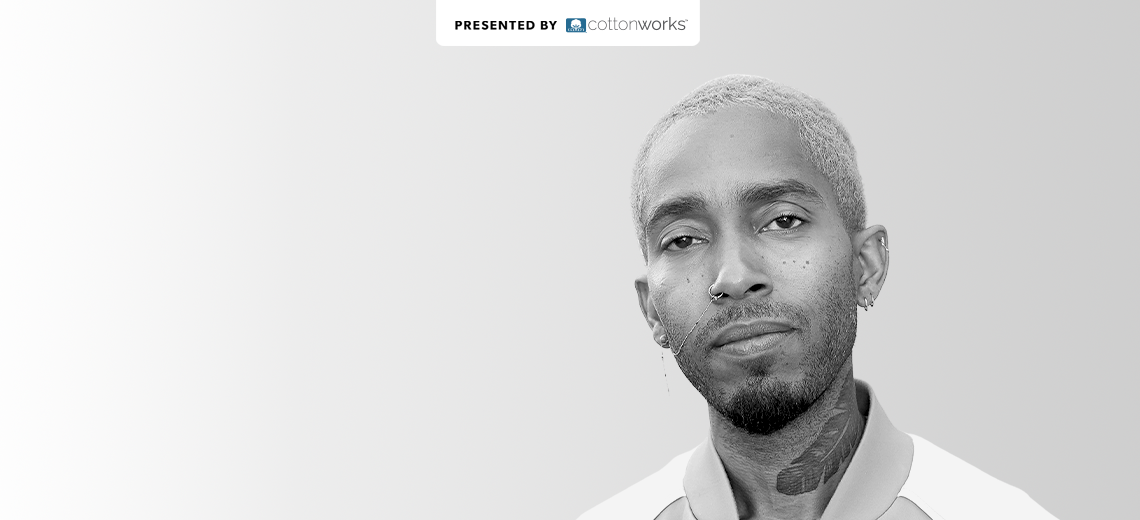This is an episode of the Glossy Fashion Podcast, which features candid conversations about how today’s trends are shaping the future of the fashion industry. More from the series →
Subscribe: Apple Podcasts | Stitcher | Google Play | Spotify
Adolescence — the transitional stage between the ages of 13 and 19 — typically signifies the development of a person’s social, romantic and career consciousness. For Patrick Henry, an L.A.-based tailor and luxury fashion brand founder, it encompassed just that. While his self-taught sewing endeavor at age 13 was motivated by his desire to pick up “pretty girls,” it led to his passion for fashion, which is now exemplified through his custom suits worn by stars including The Weeknd and Justin Bieber.
“The term luxury in itself is evolving,” said Henry on the latest Glossy Podcast. “[For clothing,] it’s all in the details: It’s the stitching, it’s the precision, it’s where the garment is produced, what material it’s produced with and the little trims.”
Richfresh, known best for its custom suits, many of which are characterized by Henry’s signature track stripes, has since become synonymous with the term “luxe-leisure,” a term coined by Henry himself to describe the “the luxury version of athleisure.” And its pieces have been sported by A-Listers including Kodak Black, Barack Obama and Reese Witherspoon.
While the Richfresh business remains 95% custom, Henry’s business was not spared from the tribulations of Covid-19. But the challenges paved the path for the Binghampton collection, Henry’s first ready-to-wear line that was limited to 25 pieces. Looking ahead, Henry’s signature stripe, which he considers the closest thing to a Richfresh logo, will be available on a host of men’s and women’s silhouettes in 2022, he said.
“It’s important, as we move into ready-to-wear [and] potentially open up stores, that I do this right and I get the right funding,” he said.
Below are additional highlights from the conversation, which have been lightly edited for clarity.
Ad position: web_incontent_pos1
Saying goodbye to the ‘underdog outsider’ and embracing the ‘top-dog insider’
“I didn’t go to L.A. with fashion friends, and I wasn’t part of a fashion clique. I connected with [Harlem’s Fashion Row founder] Brandice Daniel because we’re both from Memphis. And she was doing a show in Memphis and reached out because she saw on social media that I was in town. She asked if I would support her fashion show, and I had a few pieces that I brought with me to show. I didn’t know [it would] lead to New York Fashion Week. You can hold on to the title of ‘outsider’ and ‘underdog’ forever, but what does that do? It’s feeding something that I don’t think needs to be fed more. Now it’s time to go from outsider and underdog to top dog and insider. I don’t need to be outside of fashion, I am fashion. So why don’t I come on inside and introduce myself?”
From rags to riches
“When we moved to California, we settled in San Diego, at first. It was one of the roughest periods… And I said, ‘Man, I’m out. I’m going to Los Angeles.’ [Ermenegildo] Zegna called me in for an interview [in their Los Angeles store], and I was in a nice suit that I’d altered. They hired me to do sales, and I ended up being the No. 1 in sales at my store and it was a piece of cake. It gave me the confidence to [think], ‘Oh man, you can sell a luxury product easily. Even though you’re rough around the edges, you still have a look. And you have a way of connecting with people.’ … It was then time to go and forge my own path, and I left in 2014 and started my first business in L.A., which was called Richfreshman. It was inexpensive suits [that were] $600 or $800, and made in China. [There were] orange, pink and blue suits. In L.A., as much as you would think it’s a colorful place, [everyone still wore] a black, gray or navy suit. I was stepping out there and doing something different.”
On the power of manifesting
“John Legend and Kevin Hart are my two biggest celebrities [dream clients] that I got when I first started Richfresh. I [had] written their names on a whiteboard before I ever started; a list of 12 celebrities I had to have … I may have gotten all of them now. But I reached out to their stylists and said, ‘Hey, here’s who I am. This is what I do. You should connect with me.’ And they did. The rest is history.”




